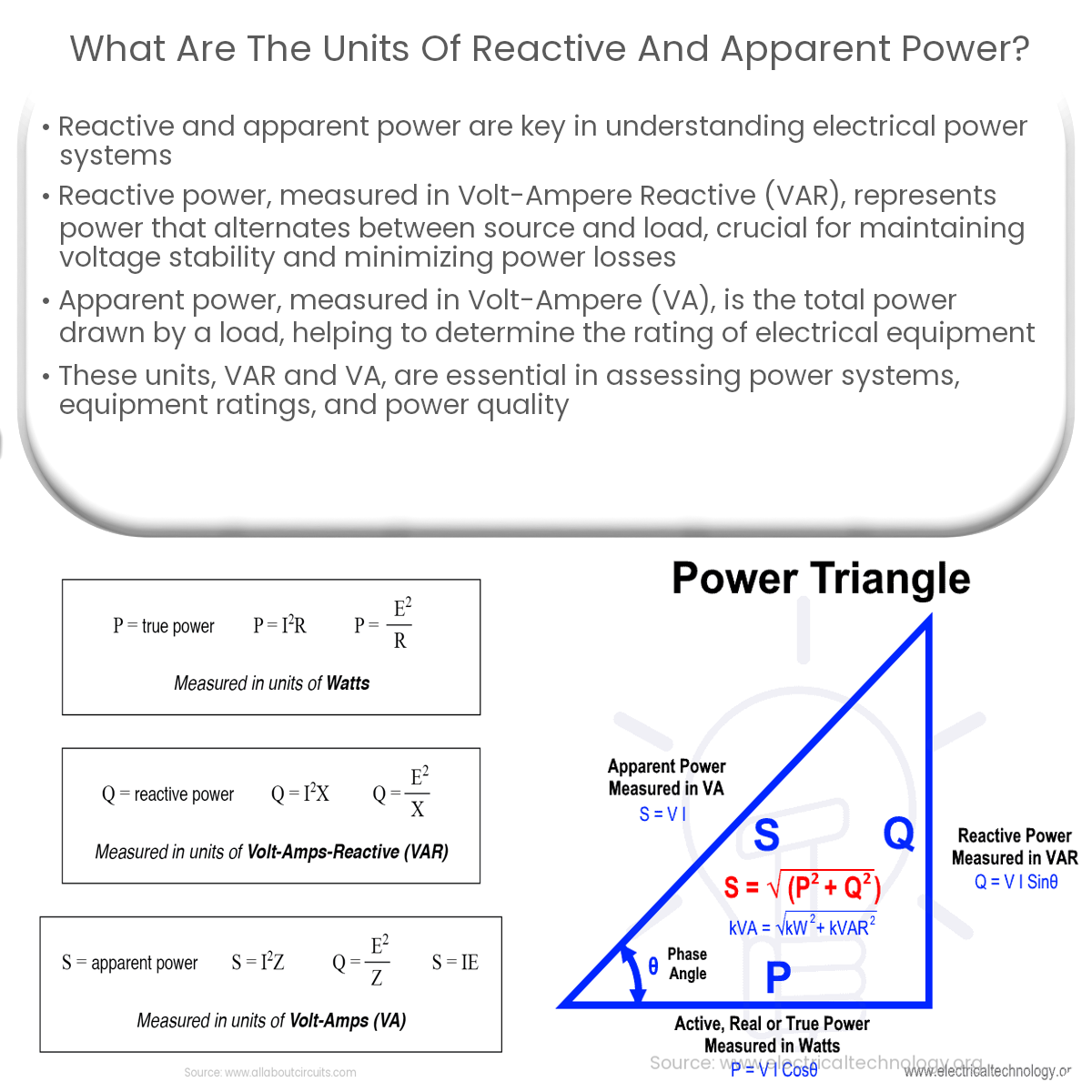The unit for reactive power is Volt-Ampere Reactive (VAR), and the unit for apparent power is Volt-Ampere (VA). Both are vital in power system analysis.
Units of Reactive and Apparent Power
Reactive and apparent power are essential concepts in understanding electrical power systems. The units used for these quantities are different from the unit of active power. In this article, we’ll discuss the units of reactive and apparent power and their significance in power systems.
Reactive Power
Reactive power represents the power that alternates between the source and the load, mainly due to inductive and capacitive components in an electrical circuit. Reactive power doesn’t perform any useful work; instead, it maintains magnetic and electric fields. The unit for reactive power is the Volt-Ampere Reactive (VAR).
- Volt-Ampere Reactive (VAR): VAR is the unit used to represent reactive power. It indicates the amount of power exchanged between the source and the reactive components in the circuit. It’s essential to manage reactive power in power systems to maintain voltage stability and minimize power losses.
Apparent Power
Apparent power is the combination of active and reactive power in an electrical circuit. It represents the total power drawn by a load, including the power that does useful work (active power) and the power that maintains magnetic and electric fields (reactive power). The unit for apparent power is the Volt-Ampere (VA).
- Volt-Ampere (VA): VA is the unit used to represent apparent power. It’s the product of the voltage and current in an AC circuit, regardless of the phase angle between them. In practical applications, the apparent power helps determine the rating of electrical equipment, such as transformers and generators, to ensure they can handle the total power demand.
Conclusion
Understanding the units of reactive and apparent power is crucial for the analysis and design of electrical power systems. The Volt-Ampere Reactive (VAR) and Volt-Ampere (VA) are the respective units for reactive and apparent power, and they play a significant role in the assessment of power systems, equipment ratings, and power quality.


